Rose apple, Syzygium jambos, is a large shrub or small to medium tree, usually from 9 - 45" (3 to 15 m) in height with low branches. Rose apple can not be compared either a rose or an apple. Belongs to the myrtle family.
Rose apple comes from Eastern India. In Asia, the tree is symbolic and is associated with many legends. It is believed that the rose apple is the golden fruit of immortality, while Buddha reached enlightenment when he sat under the tree. Rose apple has a thick skin, with thin, branching twigs.
Evergreen leaves of the rose apple are opposite, lanceolate or thin and elliptic. Their length is from 10 to 22 cm, and the width varies between 2.5 and 6 cm. Older leaves are dark green, and young - pink.
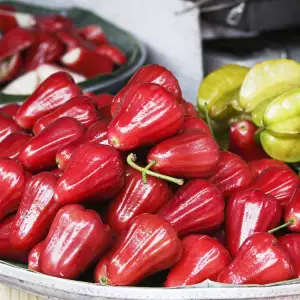
Rose apple is cream or green and white, 5 to 10 cm long. They consist of 300 prominent stamens with 4-leaf petals and 4 green and white curved petals. Most frequently, 4 or 5 colors are grouped together in dense clusters. The fruit of the rose apple comes out of a stiff green cup. An oval or slightly pear-shaped, it has a 4.5 cm length.
The skin is smooth and thin, white or pale yellow, and sometimes has a deep pink hue. The flesh is sweet, with a scent reminiscent of rose. In the middle of the core of the fruit, there are from one to four brown seeds, medium thick, with a thickness of 1-6 cm.
Deep clay soil is considered the most suitable for the cultivation of rose apple, but it is not required. It also grows well in sand or chalky soil with low organic matter. Rose apple needs a warm and sunny location, which is well protected from severe frosts. The tree needs a lot of space. Grows quickly and begins to bear fruit at the age of 4 years old.
There are many varieties of rose apple, including unimpressive wild trees. In Thailand, for example, in the most cultivated crop variety gives pale green fruit. Malaysian varieties usually bear fruit with red skin.
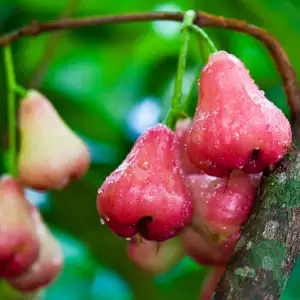
Composition of rose apple
Rose apple is rich in thiamine, vitamin C, calcium, iron, magnesium, potassium and sulphur. It is a good source of fibre, and at the same time has a very low content of fat and calories. 100 grams of rose apple has only 56 calories.
Selecting and storing rose apple
Rose apple is nothing like the ordinary apple. When the skin is bright red, then the fruit is ripe. Rose apples should be stored in a refrigerator.
Rose apples in cooking
Among the tropical world, rose apple is one of the favorite treats for small children. The fruit is sometimes cooked with a little sugar and served as a dessert. Culinary experimenters have split the fruit in half and filled the inside with different mixtures.
Rose apples are easily bruised and broken. The fruit must be picked just to be fresh and edible. Rose apple is sweeter than real apples, but its interior is slightly crispy. The skin of this pink apple is edible, but the seeds are not. Rose apple can be eaten raw or in the form of jellies and jams and canned fruit, for a more pronounced flavor.
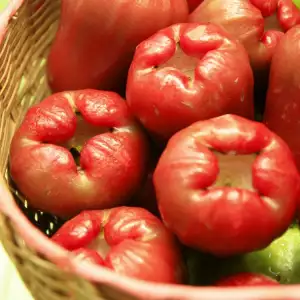
In puddings and cakes, it offers a gentle scent of rose. Fruit extract of rose apple can be used to make the sweet smell of rose water. Pink apple makes sauces that add a pleasant aroma to different drinks.
Benefits of rose apples
Rose apple is low in calories and rich in antioxidants. The reason for the low calorie content in the rose apple is that it is composed of about 90% water. In India, the fruit is considered a very good tonic that helps the brain and liver.
People in some parts of Africa use its skin for the treatment of infectious diseases. The fruit acts as a diuretic, the seeds assist in disorder. In Cuba, they believe that the root of the rose apple is a cure for epilepsy. In Nicaragua, infusions of the seed are used in the treatment of diabetics.
The rind of the fruit is used for the treatment of asthma. Tea made from the flowers lowers fever, and a decoction of the leaves relieves sore eyes.
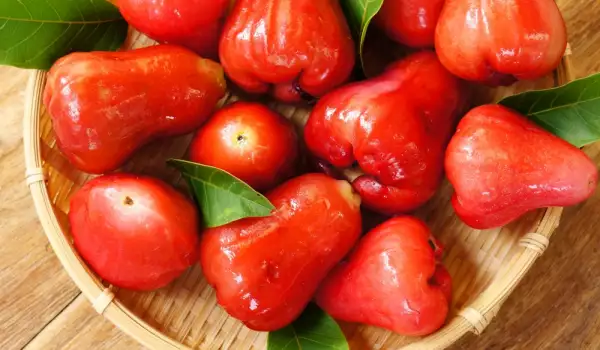
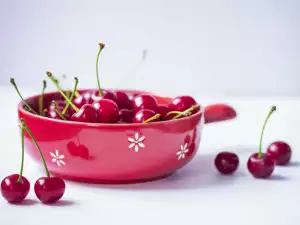
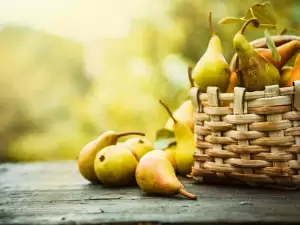
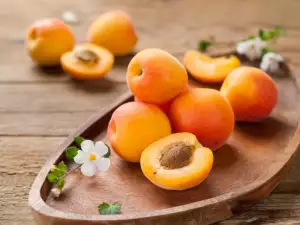

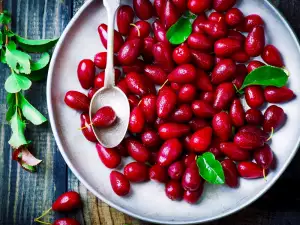

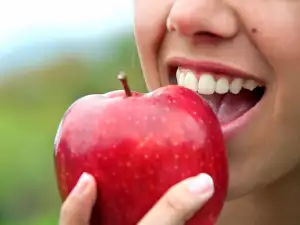
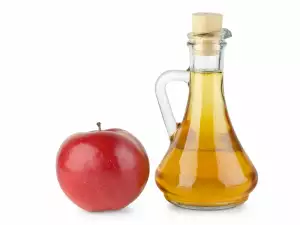
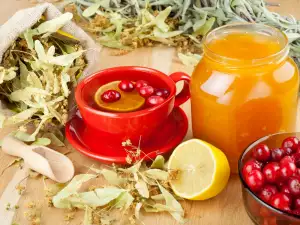



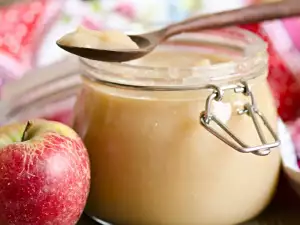





Comments